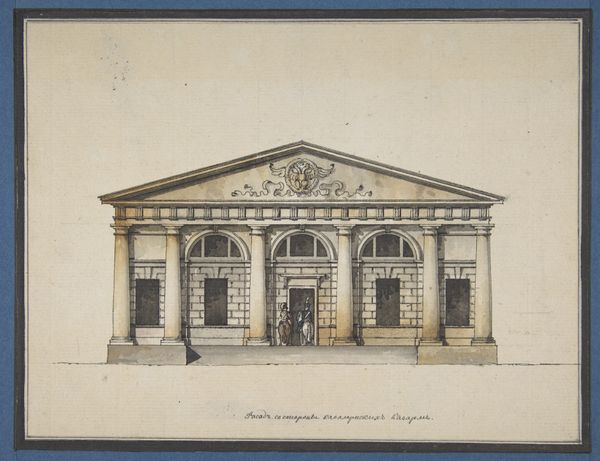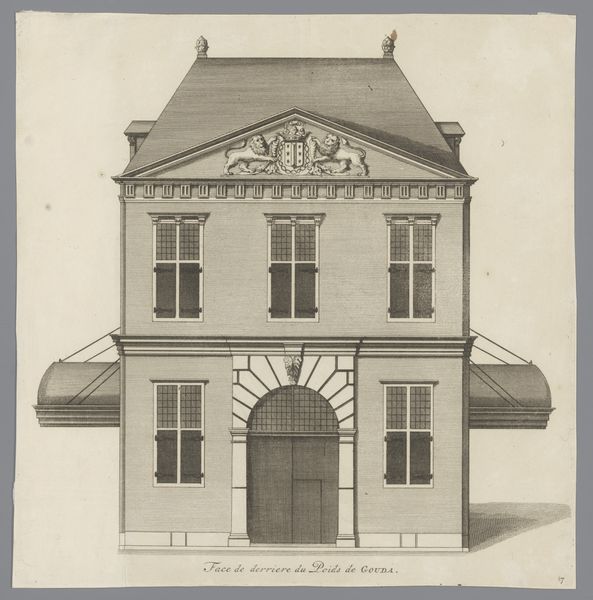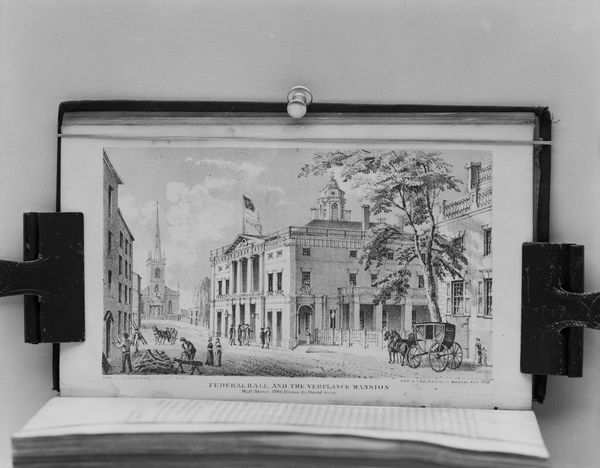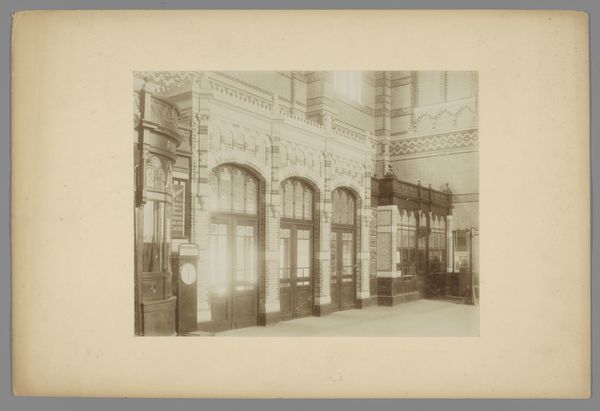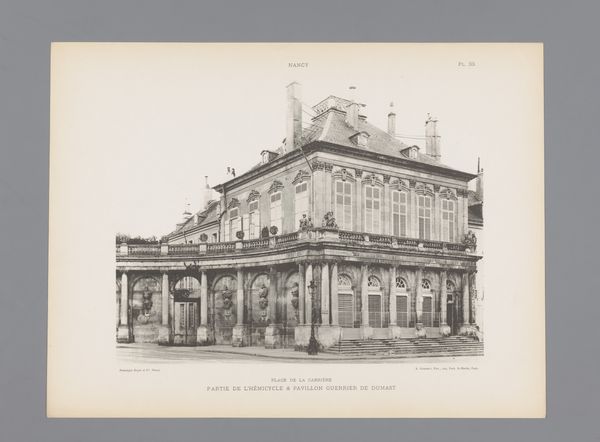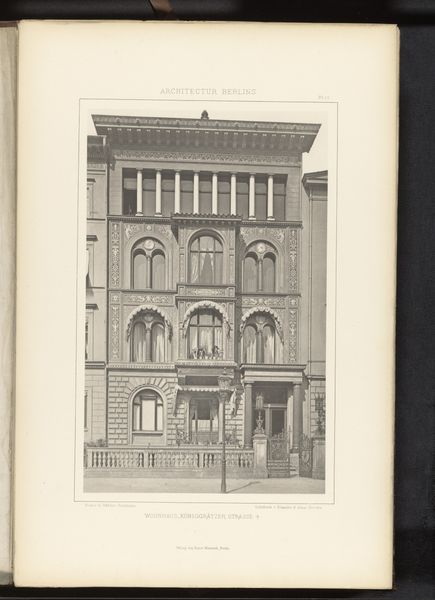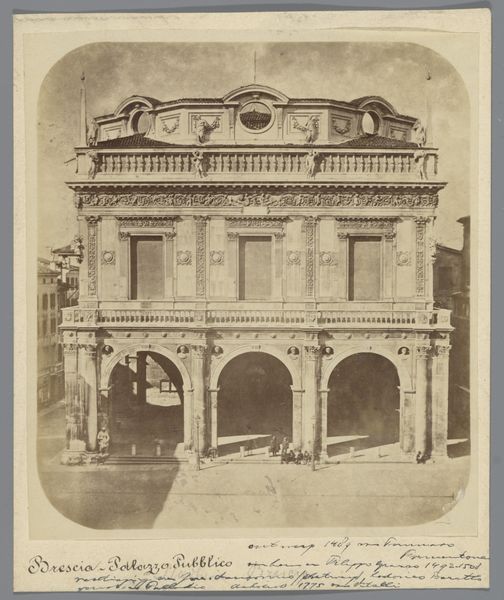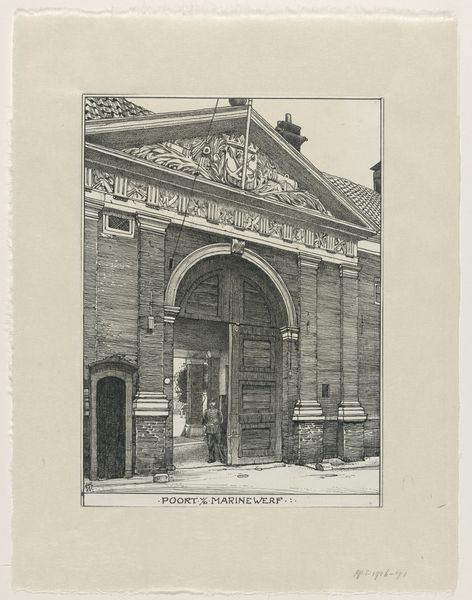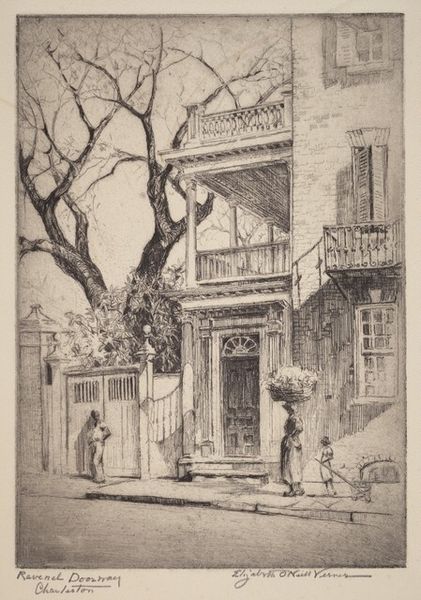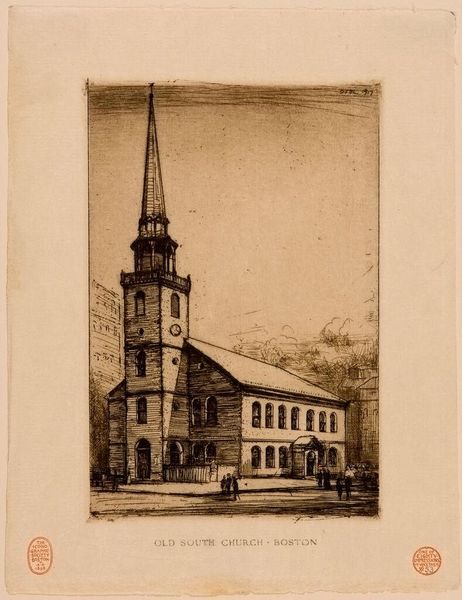
drawing, painting, gouache, paper, watercolor, graphite, architecture
#
drawing
#
16_19th-century
#
painting
#
gouache
#
sculpture
#
perspective
#
paper
#
watercolor
#
arch
#
framed composition
#
water
#
graphite
#
cityscape
#
architecture
#
realism
Dimensions: 30.5 × 20 cm (12 × 7 7/8 in.)
Copyright: Public Domain
Curator: Oh, it’s utterly charming. It gives me a sort of placid, dreamy feeling, like a memory half-remembered. Editor: Yes, "Middletown Bank, New York, Perspective," created around 1862 by Peter Bonnett Wight and now residing at The Art Institute of Chicago, employs gouache, watercolor, graphite, and drawing on paper. A detailed piece of architectural realism, wouldn't you agree? Curator: Realism, yes, but there’s an almost naive quality too, like a folk artist rendering the grand bank. I love the almost transparent sky washing over the angular peak. It’s less about perfect rendering and more about capturing a feeling of burgeoning prosperity. Editor: Observe the Gothic Revival detailing – the pointed arches, the steeply pitched roof, and crenellations. It's clearly an exercise in applied historicism. What could this say about institutional authority being translated for a mid-19th century American context? Curator: Hmmm, possibly. Or maybe the artist saw it as a sort of aspiration, a romantic notion of stability cast in stone. I'm fixated by the figures. Look at the little scenes playing out – couples pausing in conversation. It transforms a monument into a populated, living space. It feels immediate and deeply personal. Editor: Consider Wight's compositional strategy. The central vanishing point reinforces the bank’s prominence while other buildings frame the space. Do you consider the perspective entirely accurate? Curator: Probably not perfect perspective; and, yet, that enhances the picture's authenticity. The little flaws add to its sweetness. Also the colors give it some sense of life – and almost feels playful. Editor: Well, through line, form, and meticulous detail, Wight presents us with far more than simply the image of a bank in this interesting artwork. Curator: True, it's a layered work – historical document, architectural study, and a strangely tender snapshot of a specific moment in time. Makes you wonder about those people standing in front, doesn't it?
Comments
No comments
Be the first to comment and join the conversation on the ultimate creative platform.

